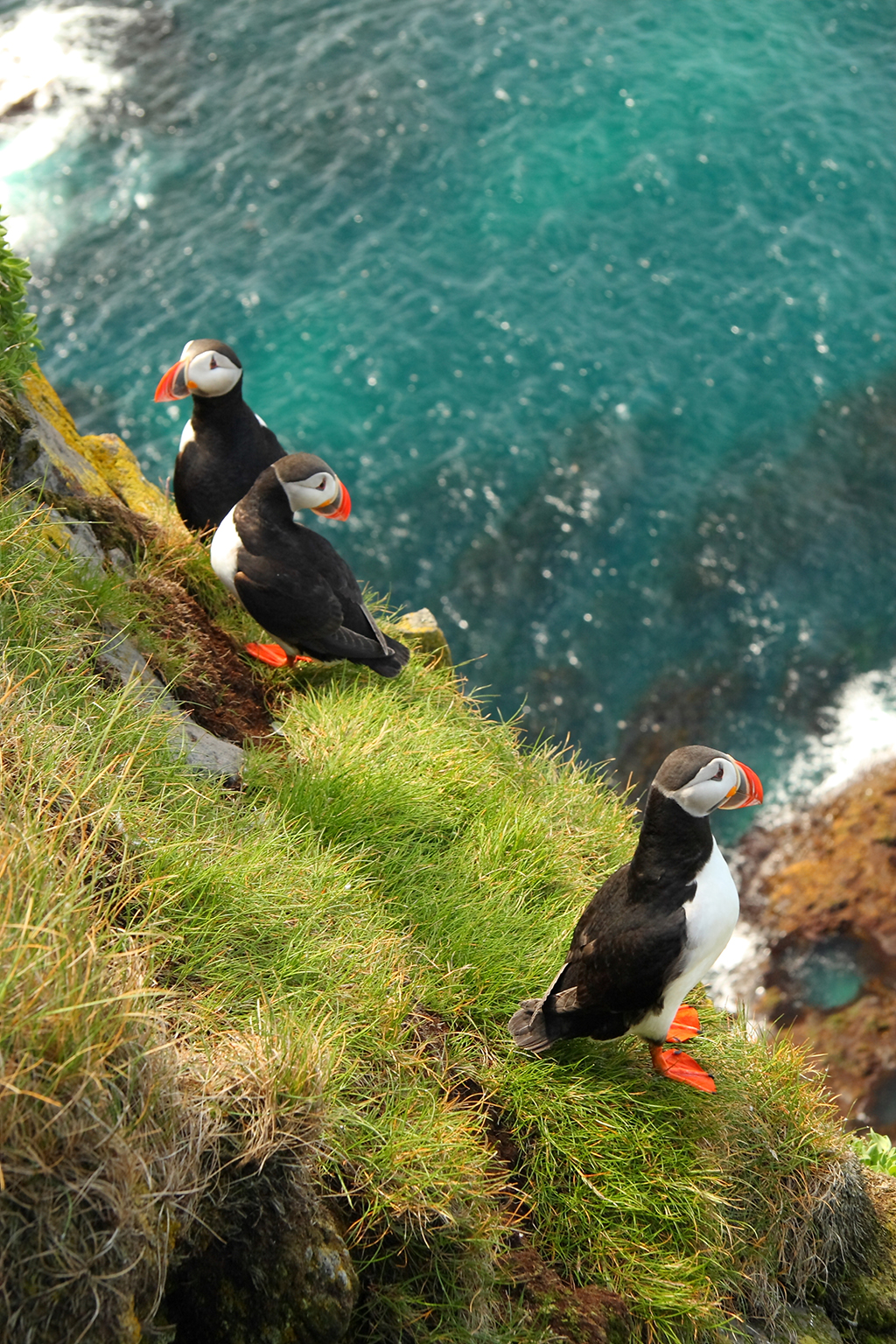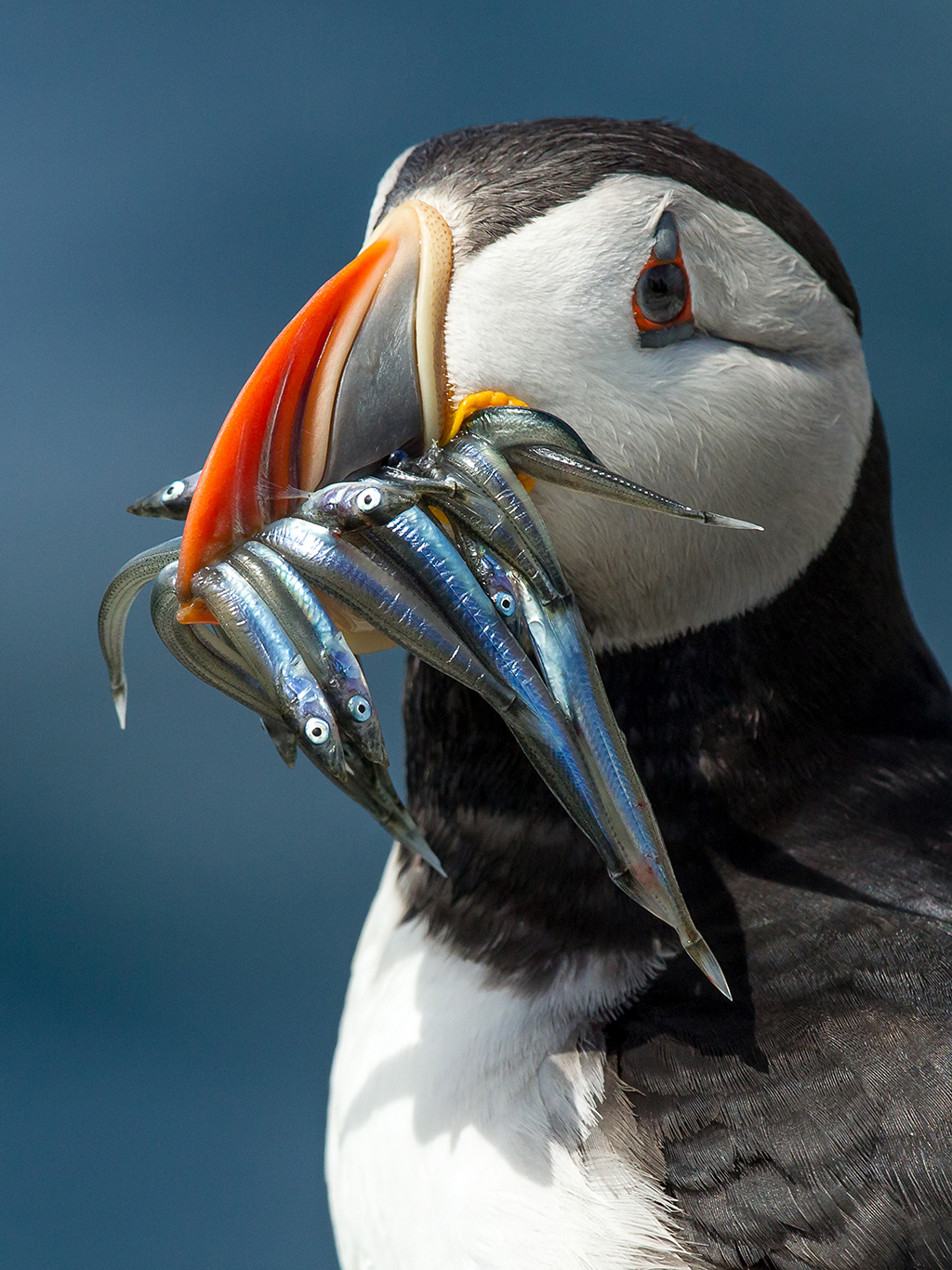The puffin is one of our best loved seabirds, but its appeal goes far beyond its quirky appearance.
‘Puffin therapy’ is for many people apparently more powerful than all the wonder nerve-calming drugs on the market.
Ian and Colin Morrison of Mull have been running their Turus Mara trips out to the Treshnish island of Lunga now for many years, and have long advocated this unique treatment. On one voyage I took with them, a blind woman had come from abroad especially to get close to puffins.
Fellow passengers and I escorted her carefully ashore, guiding her over rocks and seaweed to a vantage point engulfed by the bustle and activity that is a seabird colony in the breeding season. I was humbled by her resolve yet wondered how she could experience the puffins without seeing them.
She asked us to describe the scene. It was then that I witnessed her joy. Later, back at the boat, she thanked us, saying, ‘I have been blind all my life but the puffin is the bird I most wanted to see; now I have heard and smelt them, and you have described them, I feel the picture is complete.’ Tears were running down her face.
Puffins are fabulous birds. We relate to their almost human expression, their vibrant red and yellow bill, and the quizzical, humorous expression in their beady dark eyes, enhanced by red rims and dark grey eyebrows. Add to this their extraordinary vocalisations, their amorous exclamations emulating from underground breeding chambers, their neat rounded shape, and their endearing breeding displays as they chortle and coo, clacking bills together while offering mates a piece of pink thrift or sea campion, and their charming demeanour is complete.
However, for much of the year the pelagic puffin is seldom seen as it winters far out to sea in the deep Atlantic, where little is known of its habits. During this time it returns to a sooty grey, the coloured horny bill plates are moulted and become drab until the following breeding season. When vast numbers of puffins and other auks are washed ashore during winter storms, there is huge cause for concern. We remain unsure of the causes of these distressing seabird ‘wrecks’ that usually coincide with particularly violent weather.

The puffin sits near the top of the food chain, an important barometer of the health of our seas. In recent years there have been growing concerns about the breeding failure of many seabirds.
In 1989, 90% of Shetland puffins failed to rear any chicks at all due to the over-fishing of sand eels, and though global warming is constantly blamed for the drop in numbers of this vital link in the marine food chain, during the 1990s the worrying trend continued and auk, kittiwake and tern chicks all starved to death as a result of depleted fish stocks. Since then, sand eel fisheries have been regulated but there is still much for wildlife to contend with.
As well as beleaguered fish stocks, more intensive scientific fishing methods, a higher frequency of savage storms and the toxic contamination of the sea all weaken and kill marine wildlife. Seabird ‘wrecks’ may be a natural occurrence, but the effect global consumerism has on the health of our seas is a horror that must be addressed.
Puffins and their eggs have been an important food source for us for centuries, yet surprisingly it appears that numbers remained relatively unaffected by the large seabird harvests of the past. Oddly, the puffin was deemed as fish not fowl and therefore could also be eaten during Lent. Until the 1950s, a bakery in Stromness in Orkney added puffin eggs to the mysterious ingredients of its cakes. Apparently, they had an unsurpassed flavour and were very popular.
The St Kildans preferred to harvest the birds rather than their eggs, catching them using horsehair nooses attached to long poles. While the famous St Kildan cragsmen took to the cliffs to collect gannets and fulmars, capturing puffins was women’s work. They would occasionally drag them from their burrows.
The first unfortunate bird to be caught was used as a lure, plucked of most of its feathers, and set free again. Curious puffins ventured close and became easy prey. During the summer months puffins were added fresh to the daily porridge, while in winter they were dried and salted.
Early visitors deemed their flesh ‘revolting’ but they were a staple for many remote island communities, and are still eaten in a similar way in Iceland today.

While puffins are often viewed as comical on land, they are strong fliers, with short wings that beat 300 to 400 times a minute. On their breeding grounds they congregate in huge numbers at dawn and dusk, wheeling and circling in great arcs over flower-covered clifftops. Witnessing these dramatic displays on islands such as the Isle of May, the Shiants and Handa is life-changing.
The gentle appearance of the puffin is a myth, however. Its nickname, ‘coulter neb’, refers to the plough-like bill, an extremely effective burrowing tool when coupled with incredibly sharp claws. Puffins will defend their burrows from gulls and skuas. A large voracious gull waiting at the entrance may be rudely showered with flying earth as an industrious puffin completes DIY extensions within. And when the puffins return to breed they can effortlessly oust a rabbit from a prospective subterranean maternity site. Their pugilistic nature frequently leads to heated battles with other puffins.
A single egg is laid and incubated by both parents and the downy puffling eventually takes to the sea under the cover of darkness following seven weeks of life down under. During that time the adults are kept busy ferrying in copious amounts of sand eels, sprats and other small fish. They are able to carry numerous fish at once but are frequently terrorised into dropping their catches when ambushed by gulls and skuas.
The Shetlanders affectionately call the bird ‘Tammie Norrie’, while the name ‘Sea Parrot’ is a reference to their large colourful bill. Puffins have several Gaelic names, but Seumus Ruadh, ‘Red Seumus’, shows that even though they were widely eaten and their feathers sold for a healthy price, people have always had great affection for them.
The puffin’s Latin name – fratercula, ‘little brother’ – links them to the Celtic monks who once shared their far-flung islands, and like the thousands of tourists that flock to Scotland every year to see them, they too held them in high esteem.
Visit www.turusmara.com for more details of the trips.
TAGS

